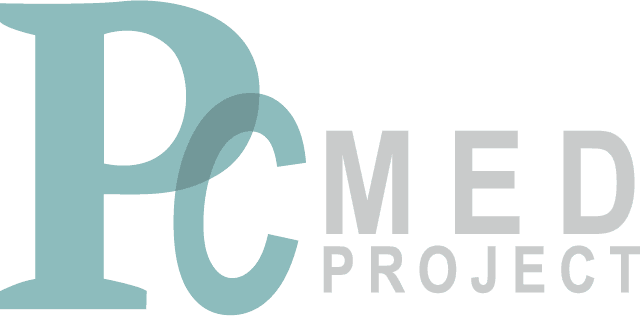Depressive Disorders: Diagnosis and Treatment
SUMMARY:
Depressive disorders are characterized by the presence of a sad, empty, or irritable mood and are accompanied by somatic and cognitive changes that significantly impair a person’s ability to function. Depression due to Major Depressive Disorder is a leading cause of disability worldwide, and the leading risk factor for suicide. In the primary care setting up to 18% of patients have depression and about 9% of the US population meet criteria for depression. Many of these patients are not seen by psychiatrists or psychologists and depend on management and screening by their primary care providers.
SYMPTOMS:
- Depressed mood most of the day, nearly every day (can be self-reported or based on observation of others)
- Markedly diminished interest or pleasure in almost all activities most of the day, nearly every day
- Change in weight or appetite, either increased or decreased
- Change in sleep patterns, either increased or decreased
- Psychomotor agitation or retardation
- Fatigue or loss of energy
- Feelings of worthlessness or excessive guilt
- Diminished ability to think, concentrate, or indecisiveness
- Recurrent thoughts of death, recurrent suicidal ideation with or without a specific plan, or a suicide attempt
DIAGNOSIS:
Major Depressive Disorder (MDD)
- Depressed mood OR loss of interest/pleasure AND ≥ 4 additional symptoms from above list
- Symptoms must be present daily, or nearly every day, during the same 2-week period and represent a change from the previous functioning
- Symptoms must cause significant distress or impairment in social, occupational, or other areas of functioning.
- Must not be better explained by schizophrenia spectrum disorder, bipolar disorder or be attributable to substance use or medical conditions
Persistent Depressive Disorder (PDD) – formerly known as dysthymia
- Requires a depressed mood AND three or more of the above symptoms for most days for ≥ 2 years
- For adolescents, the mood may be irritability and the duration must be ≥1 year
- Individuals must not be without the symptoms for > 2 consecutive months during the 2 year (or longer) period
- Must not be better explained by schizophrenia spectrum disorder, bipolar disorder or be attributable to substance use or medical conditions
- Symptoms must cause significant distress or impairment in some important areas of functioning
Premenstrual Dysphoric Disorder (PMDD)
- Requires
- ≥ 5 symptoms that are present in the week prior to menses
- Occurs in at least 3 consecutive menstrual cycles
- Start to improve within a few days after the onset of menses
- Become minimal or absent in the week after menses
- One of the symptoms must be a marked change in mood as described by
- Affective lability | Irritability or anger | Depressed mood | Anxiety
- ≥1 of the following symptoms must be present for a total of 5 symptoms
- Decreased interest in usual activities
- Difficulty in concentration
- Lethargy or lack of energy
- Change in appetite or food cravings
- Change in amount of sleep
- Feeling overwhelmed or out of control
- Physical symptoms: e.g., breast tenderness or swelling, join or muscle pain, a feeling of being bloated or weight gain
- Symptoms must cause significant distress or interference with activities and must not be an exacerbation of another disorder.
Adjustment Disorder with Depressed Mood
- Low mood | Tearfulness | Feelings of hopelessness
- Symptoms occur within 3 months of the onset of an identifiable stressor
- Symptoms must be severe enough to cause distress outside of what would be expected, or to impair daily functioning
- Cannot meet criteria for other psychiatric disorder (e.g., MDD)
Substance/Medication-Induced Depressive Disorder
- Depressive symptoms associated with the ingestion, inhalation or injection of a substance
- Persists beyond the expected length of physiological effects, intoxication or withdrawal period.
Depressive Disorder Due to Another Medical Condition
- Prominent and persistent period of depressed mood or diminished interest in activities that predominates the clinical picture
- Thought to be related to the direct physiological effects of another medical condition
- Commonly associated medical conditions including hypothyroidism, CVA, Parkinson’s disease and Huntington’s disease
Other Specified Depressive Disorders
- Recurrent brief depression
- Depressed mood and 4 other above symptoms for 2 to 13 days every month for the past 12 months
- Not associated with the menstrual cycle
- Does not meet criteria for other disorders
- Short-duration depressive disorder episode
- Depressed mood and ≥4 other symptoms for 4 to 13 days
- Associated with significant distress or impairment
- Does not meet the criteria for other disorders
- Depressive episode with insufficient symptoms
- Depressed mood with ≥1 other symptom with significant distress or impairment that persists for ≥2 weeks
- Does not meet the criteria for other disorders
- Unspecified Depressive Disorder
- Depressive symptoms that cause significant distress or impairment
- Does not meet the criteria for any other disorder
Note: Specifiers for Depressive Disorders
- With anxious distress
- With mixed features
- With melancholic features
- With atypical features
- With psychotic features
- With catatonia
- With peripartum onset
- With seasonal pattern
Screening
The USPSTF recommends screening for depression in individuals > 12 years of age when there are systems in place to accurately diagnose and effectively treat, and to provide appropriate follow-up. Individuals with depressive disorders should be evaluated for suicide risk and safety planning should be done when appropriate.
- Common Screening Tools
- Patient Health Questionnaire (PHQ-9 and PHQ-2)Patient Health Questionnaire (PHQ-9 and PHQ-2)
- Geriatric Depression Scale
- Edinburgh Postnatal Depression Scale (EPDS)
Testing
- Diagnosis should be made on history according to the DSM-5 criteria listed in the above section | Other diagnosis should be considered based on history and physical exam
- Lab work can be considered if certain medical conditions are suspected to be contributing (e.g., TSH | RPR | B12 | CBC)
- Patients should be carefully screened for current or past symptoms of manic episodes as this would change diagnosis and medication treatment
- Symptoms of psychotic features would affect medication choices
- Evaluate for medications or substances that may be affecting mood (e.g. Alcohol | Opiates | Beta blockers)
KEY POINTS
- Depression is a common and debilitating illness that affects a significant number of patients, most of whom seek help from their primary care providers
- All adults should be screened for depression via a screening test such as the PHQ-2
- Treatment depends on severity of symptoms and includes pharmacotherapy, psychotherapy, or a combination of both
LEARN MORE – Primary Sources
VA/DoD Clinical Practice Guidelines – Management of Major Depressive Disorder
AFP: Common Questions About the Pharmacologic Management of Depression in Adults

SPECIALTY AREAS
- Alerts
- Allergy And Immunology
- Cancer Screening
- Cardiology
- Cervical Cancer Screening
- Dermatology
- Diabetes
- Endocrine
- ENT
- Evidence Matters
- FAQs@PcMED
- General Internal Medicine
- Genetics
- Geriatrics
- GI
- GU
- Hematology
- ID
- Medical Legal
- Mental Health
- MSK
- Nephrology
- Neurology
- PcMED Connect
- PrEP Resource Center
- Preventive Medicine
- Pulmonary
- Rheumatology
- Test Your Knowledge
- Vaccinations
- Women's Health
- Your Practice

